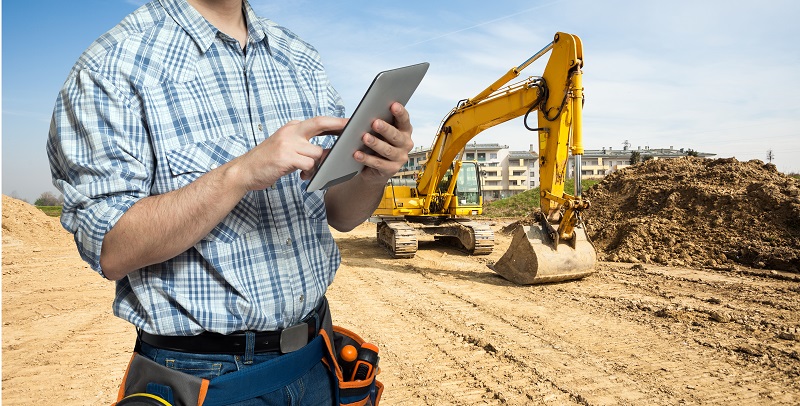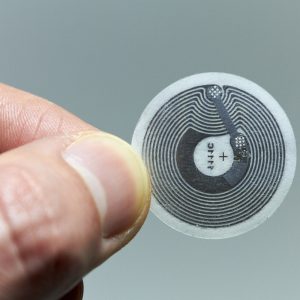
Mike Weston, CEO at data science consultancy Profusion, discusses how the Internet of Things will affect construction plant.
With the introduction of Building Information Modelling (BIM), along with other recent technology innovation, the way the environment around us is built has become radically different. It’s not unusual to see a site manager do their rounds with tablet in hand. Now, the face of construction is set to change once more, helped, again, by new technology.
I am, of course, talking about the Internet of Things (IoT). Put simply, IoT is a catch-all phrase used to describe objects that can be connected to the internet and made ‘smart’.
These devices range from a smart fridge and kettle, to smart clothing and wearable technology (e.g. Fitbit, Apple Watch), beacons and sensors. It is this latter group which is most exciting for construction professionals.
Nearly every construction project aims to be more efficient and safer than the last, so equipping a site with smart devices that can tell you precise information about their environment and performance can help achieve this goal.
Several companies have already realised the multi-billion pound opportunity that IoT brings to the construction industry.
 The likes of Caterpillar, JCB and Laing O’Rourke have all recently experimented with IoT tech. Caterpillar recently announced that everything they manufacture will be equipped with sensors and other connected devices by the summer.
The likes of Caterpillar, JCB and Laing O’Rourke have all recently experimented with IoT tech. Caterpillar recently announced that everything they manufacture will be equipped with sensors and other connected devices by the summer.
At the same time, the company also stated that it intends to be the leader in what it sees as the future of construction – completely digitalised and data driven fleets and job sites.
IoT technology has many applications for construction plant. Sensors placed on equipment can measure anything from engine load, fluid temperature and pressure, idle time, fuel consumption and location.
You’ll be able to tell if a certain operator uses more fuel than another or when someone may be using machinery incorrectly and may require re-training.
This 360 degree view will allow managers to know far more about machine performance and efficiency than they do currently, and take steps to reduce energy consumption and increase productivity.
By measuring machine idle time, and how equipment is used and moved around a job site, operators will be able to see when and where a certain machine is required. Applying this knowledge to every single bit of kit on site will allow managers to plan when to allocate certain machines and when they can be used elsewhere.
Likewise, if you know how often a machine is being used and for how long, you can predict when that apparatus is likely to require maintenance.
Real-time data on the machine’s performance can alert you to any issues before parts break down. IoT technology allows you to switch from having to react to break-down and maintenance issues, to proactively combating them.
Reducing the likelihood of plant breakdown and downtime also reduces your potential loss in revenue and worker idle time. Real-time data from IoT devices also allows you to only do repairs and up-keep of your machines when it is most needed – and saves you wasting resources on equipment that doesn’t yet require attention.
This informed maintenance will also prolong the life of your machinery.
The ability to track machine performance in real time is also an asset to management when they are off-site. Wherever they are based in the world, a manager will be able to see exactly what is happening on-site, what could potentially be an issue and areas that may not be running to their full capabilities.
Again, this knowledge will allow you to determine the most efficient way to run a job site – where to allocate resources and when, and what the optimal operating procedures for each bit of kit is. It will also allow you to set customer KPIs for each site and plant.
 More than a third of construction companies have experienced theft according to the 2015 Kroll Global Fraud Report. It has been estimated that equipment theft costs the construction industry between $300 million to $1 billion worldwide.
More than a third of construction companies have experienced theft according to the 2015 Kroll Global Fraud Report. It has been estimated that equipment theft costs the construction industry between $300 million to $1 billion worldwide.
That figure doesn’t include tools that are lost. Connected devices on machinery that can tell you their exact location can address this. You’ll be able to track where your equipment is at any given point, helping to prevent theft or misuse, and also making a job site safer.
Workers on site can be alerted to the location of certain vehicles and machines, helping to prevent accidental run-ins.
IoT connected equipment will also have the ability to order its own parts when it needs replacement or maintenance. This is useful to any manager on-site, but more so in hazardous or hard-to-access areas. Machine to machine communication will cut out the dangerous task of having to go to hazardous areas regularly to inspect machinery.
Another use for IoT sensors will be in monitoring site noise and vibration compliance. This was recently illustrated by Skansa, who used the technology when working next to a neonatal care unit.
Conversely, sensors embedded in building material will soon become commonplace, and can be used to monitor building performance and usage. This information can be combined with BIM to give operators greater insight on building operation and maintenance.
Ultimately, having the ability to see exactly what is happening to your machinery when it is in use and when idle, no matter where you or it are in the world, will give you insights you never even considered before.
From discovering the best procedures for certain apparatus, to knowing when to allocate resources and maintenance, or indeed, allowing the machine to re-order for itself. The future of construction plants is looking smart and data driven. It is time for plants to get connected.








